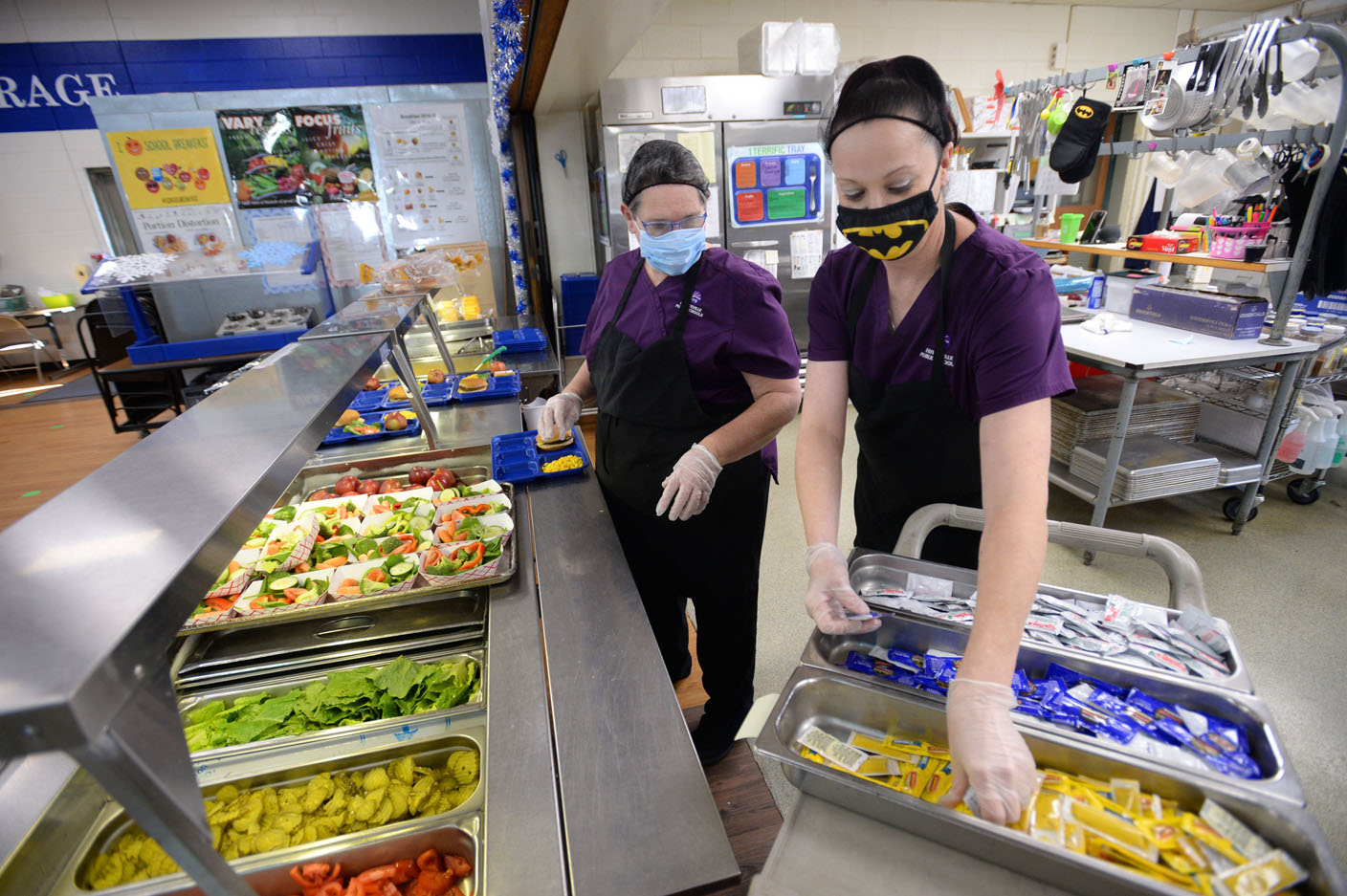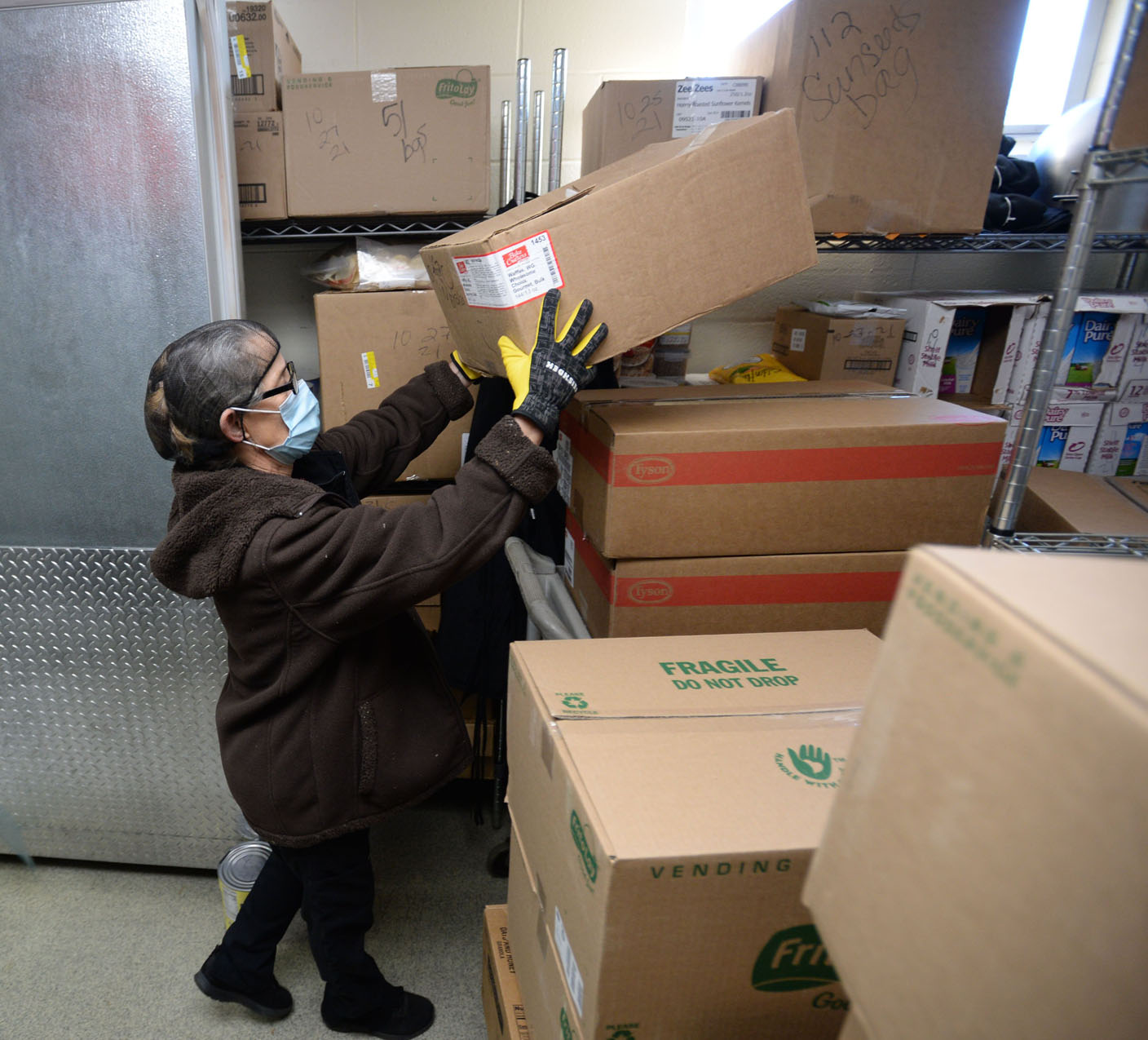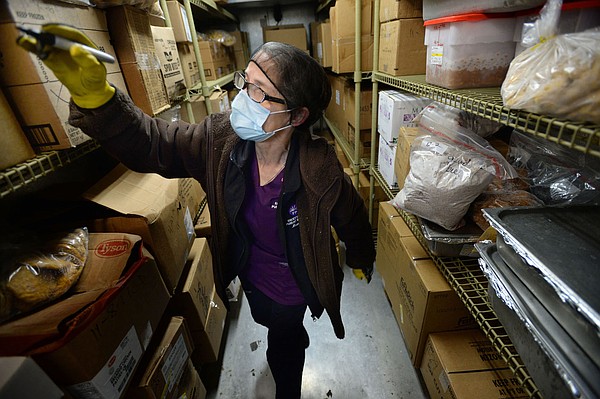Family resources
U.S. Department of Agriculture covid-19 resources for individuals and families can be found at https://www.fns.usda.gov/disaster/pandemic/covid-19/resources-individuals-families.
Source: U.S. Department of Agriculture
School districts are working to provide students meals amid disruptions in the global supply chain, administrators say.
Much of the food served to Northwest Arkansas students is locally sourced, but the covid-19 pandemic’s impact on the world’s supply chain has decreased the availability of many items required to serve meals, said Gena Smith, Springdale School District child nutrition director.
Districts often serve prepackaged or preplated food in individual servings to help streamline food service, administrators said. Prepackaged items and the packaging for preplating items are often shipped from outside the region and can be hard to find this school year, they said.
An inadequate labor force to support the supply chain is a significant factor in much of the delays districts are experiencing for receiving goods, said Michael D’Angelo, Aramark food service general manager for the Bentonville School District. Aramark partners with the district to help manage its food service program.
“Labor, or lack thereof, seems to be impacting the system,” D’Angelo said. “From getting the product out of the field, to the manufacturer, to a distribution center and to our schools, everyone is struggling with having the labor needed to meet the demand.”
Challenges in finding items to prepare or serve meals often result in last-minute changes to meal plans, D’Angelo said.
“We have made many menu changes based more on product availability,” he said. “We simply cannot secure products that were readily available prepandemic.”
Ready-to-eat items, such as muffins, may be available, but in reduced varieties as producers limit product lines, D’Angelo said.
District responses
Fayetteville is simplifying its meals to accommodate supply chain challenges, said Ally Mrachek, Fayetteville School District child nutrition director. The district has taken hard-to-find items like chicken and cheese taquitos and some snack foods completely off its menu.
“We’re kind of known for our scratch-prepared meals, and we still try to do a lot of that,” she said, noting students often have a meal prepared from scratch and something simple like a corn dog or pizza to choose from for lunch this year.
The district is also buying items in bulk to get ahead of product shortages, Mrachek said.
“I’ll order a product for maybe three months at a time, and I’ll store it in the district warehouse,” she said. “Then I can be assured that I have that product.”
Fort Smith is moving toward purchasing items like ramekins that can be washed and reused to overcome pandemic packaging shortages, said Leigh Christian, Fort Smith School District child nutrition director.
“You can’t get them or the amount you want to pay for them simply doesn’t justify using them and throwing them away,” Christian said of product packaging.
Difficulties in finding prepared items like whole grain breads and breakfast products has caused Rogers to increase the number of items prepared from scratch by the district’s staff, said Margie Bowers, Rogers School District child nutrition director.
“It has just become more important for us to do scratch baking more often,” she said.
Increased need
Many of the region’s school districts face the additional challenge of feeding more students this school year now that schools are fully open for in-person instruction, administrators say. Many districts implemented virtual or hybrid learning models last school year during the height of the covid-19 pandemic, limiting the number of in-person meals served.
The U.S. Department of Agriculture allows for all enrolled students to eat meals for free in schools this year due to the pandemic, Bowers said, resulting in more students getting their meals from school.
That’s certainly true in Fort Smith, where some schools are serving as many as 80% of their students this year, compared to 30% two years ago, Christian said.
Rogers is serving about 10,130 lunch meals per day, a 3% increase from prepandemic numbers, Bowers said. Fayetteville has experienced a 12.5% increase to 5,400 lunches served per day between this year and last, while Bentonville is serving an average of 15,000 meals per day, a 30% increase from last school year, administrators say.
Springdale has not seen an increase in meals served this year, Smith said. The district is serving an average of 16,500 meals to its approximately 22,000 students daily.
Food costs
Limitations on what’s available presents the biggest food service challenge districts are facing, but Smith said food costs are becoming a concern as well.
“Last year, we were spending around $400,000 on average a month for food, and this year is a little over $500,000 on average,” Smith said.
The Agriculture Department will reimburse districts for the funds spent feeding students, Bowers said, adding the department has increased the rate of reimbursement this year to offset the increase in costs.
Smith, however, is concerned that higher food prices will remain in place following the pandemic when the U.S. Department of Agriculture’s support of free school meals for students may cease.
The overall cost of food for U.S. consumers increased 5.3% from October 2020 to October 2021, according to the Department’s Economic Research Service. The cost of fruits and vegetables increased 3% while overall meat costs increased 11.9% during the same period.
Smith said she’s received communications from distributors in recent weeks telling her to anticipate even greater food cost increases beginning in January.
“We would get those very seldom before, and now it seems like we are receiving that information weekly,” she said.
 Nora Nygren (right) and Tricia Main, both food service technicians at Root Elementary School in Fayetteville, set out food Wednesday, Dec. 8, 2021, while preparing to serve lunch to students at the school. Rising food costs and supply chain issues are impacting the cost of school meals. Visit nwaonline.com/211212Daily/ for today’s photo gallery. (NWA Democrat-Gazette/Andy Shupe)
Nora Nygren (right) and Tricia Main, both food service technicians at Root Elementary School in Fayetteville, set out food Wednesday, Dec. 8, 2021, while preparing to serve lunch to students at the school. Rising food costs and supply chain issues are impacting the cost of school meals. Visit nwaonline.com/211212Daily/ for today’s photo gallery. (NWA Democrat-Gazette/Andy Shupe) Donnette Powell, cafeteria manager at Root Elementary School in Fayetteville, organizes cases of food Wednesday, Dec. 8, 2021, inside the school’s walk-in cooler while preparing to serve lunch to students at the school. Rising food costs and supply chain issues are impacting the cost of school meals. Visit nwaonline.com/211212Daily/ for today’s photo gallery. (NWA Democrat-Gazette/Andy Shupe)
Donnette Powell, cafeteria manager at Root Elementary School in Fayetteville, organizes cases of food Wednesday, Dec. 8, 2021, inside the school’s walk-in cooler while preparing to serve lunch to students at the school. Rising food costs and supply chain issues are impacting the cost of school meals. Visit nwaonline.com/211212Daily/ for today’s photo gallery. (NWA Democrat-Gazette/Andy Shupe)


